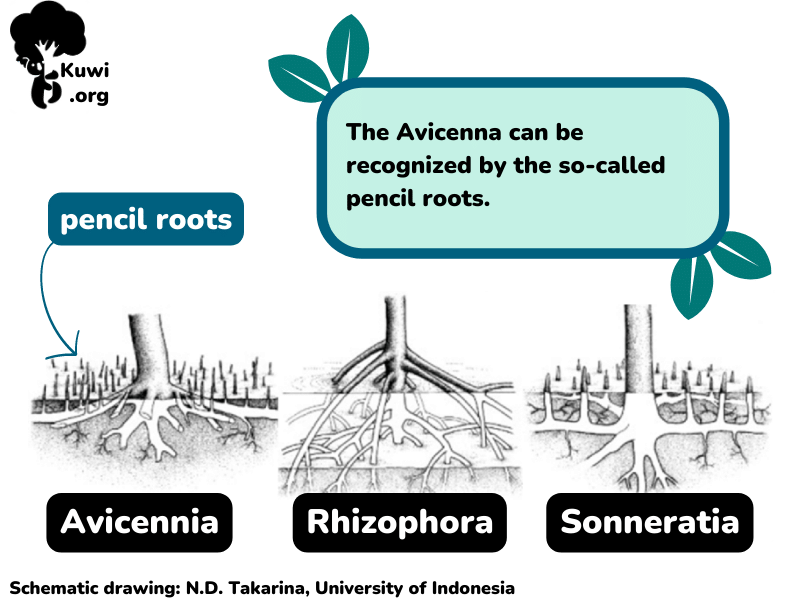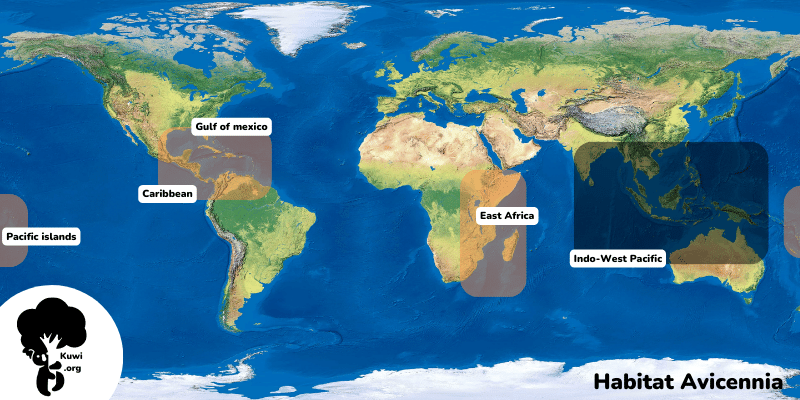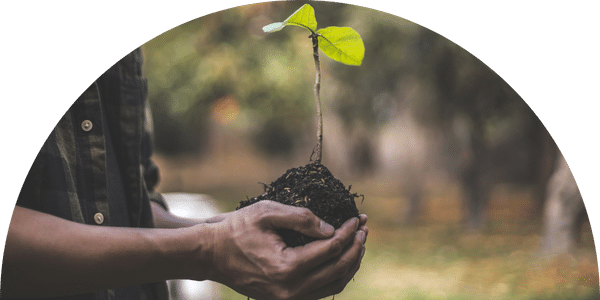Avicennia Tree
Avicennia is a flowering plant belonging to the Acanthaceae family. It comprises mangrove trees found in estuarine areas with aerial roots known as ‘pencil roots.’ These trees are commonly known as ‘api api,’ which means ‘fires’ in Malay because fireflies often gather on them. Avicennia species are found worldwide below the Tropic of Cancer.

The taxonomic classification of Avicennia is discussed. While some classifications placed it in the Verbenaceae family, recent studies suggest that it belongs to the monogeneric family Avicenniaceae within the larger Acanthaceae family according to the Angiosperm Phylogeny Group system.
The name ‘Avicennia’ is in honor of the Persian physician Avicenna (980-1037).



📊 Statistics
Avicennia trees typically reach a height of 3 to 20 meters. The exact height varies among different species and environmental conditions. The lifespan of Avicennia trees can vary depending on various environmental conditions and ecological factors. On average, they have a lifespan of around 30 to 80 years. However, some established individuals can live to be more than 100 years old.
- Average height: 2-20 meters (record: 45 meters)
- Lifespan: 20 to 80 years (record: ± 100 years)
- CO₂ absorption: ~300 kg
How much CO₂ does a mangrove tree absorb?

Avicennia trees are renowned for their role in carbon sequestration and CO2 absorption. Mangroves, including Avicennia species, are highly efficient in capturing and storing carbon dioxide from the atmosphere due to their extensive root systems and dense vegetation.
There is no indication that this species absorbs more or less than comparable mangrove species. The exact absorption depends on the size of the mangrove area and the growth rate of the trees within it. The average amount of CO₂ absorbed by one mangrove tree has been estimated at 300 kg (0.3 tons) of CO₂.
Habitat
Avicennia species thrive in intertidal zones, particularly in estuarine areas where fresh and saltwater converge. They have adapted to grow in muddy or sandy coastal areas with high salinity, tides, and marshy soils.
Avicennia species are native to tropical and subtropical regions, primarily in the Indo-West Pacific region. They are often found along the coasts of countries such as India, Bangladesh, Myanmar, Thailand, Malaysia, Indonesia, Australia, and Papua New Guinea. Avicennia marina, in particular, has a broad native distribution and is found on the Arabian Peninsula, the Persian Gulf, coastlines of the Indian Ocean, and parts of the Pacific Ocean.
Due to their ability to spread seeds through water and their adaptability, Avicennia species have been introduced to various coastal areas outside their original range. They have successfully established themselves in places such as the Caribbean, parts of America (Florida and the Gulf of Mexico), East Africa, and some islands in the Pacific Ocean. In these non-native regions, Avicennia trees have become a significant component of coastal ecosystems.

Facts about Avicennia
Avicennia species are among the most salt-tolerant mangroves. They are known for their ability to thrive in new sediment deposits and are often the first to establish themselves in such areas. The sap of these trees contains salt, which is excreted through the leaves.
The extensive root system spreads out to provide stability in unstable substrates. Moreover, the ‘pencil roots’ emerge from the mud, serving as a means of gas exchange due to the limited availability of oxygen in the muddy environment.
The flowers of Avicennia species are aromatic and produce abundant nectar, attracting insects.
IUCN Red List

Plant this tree


